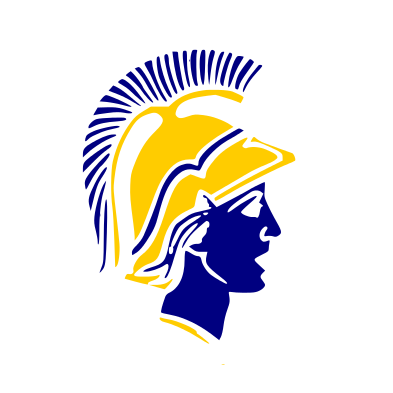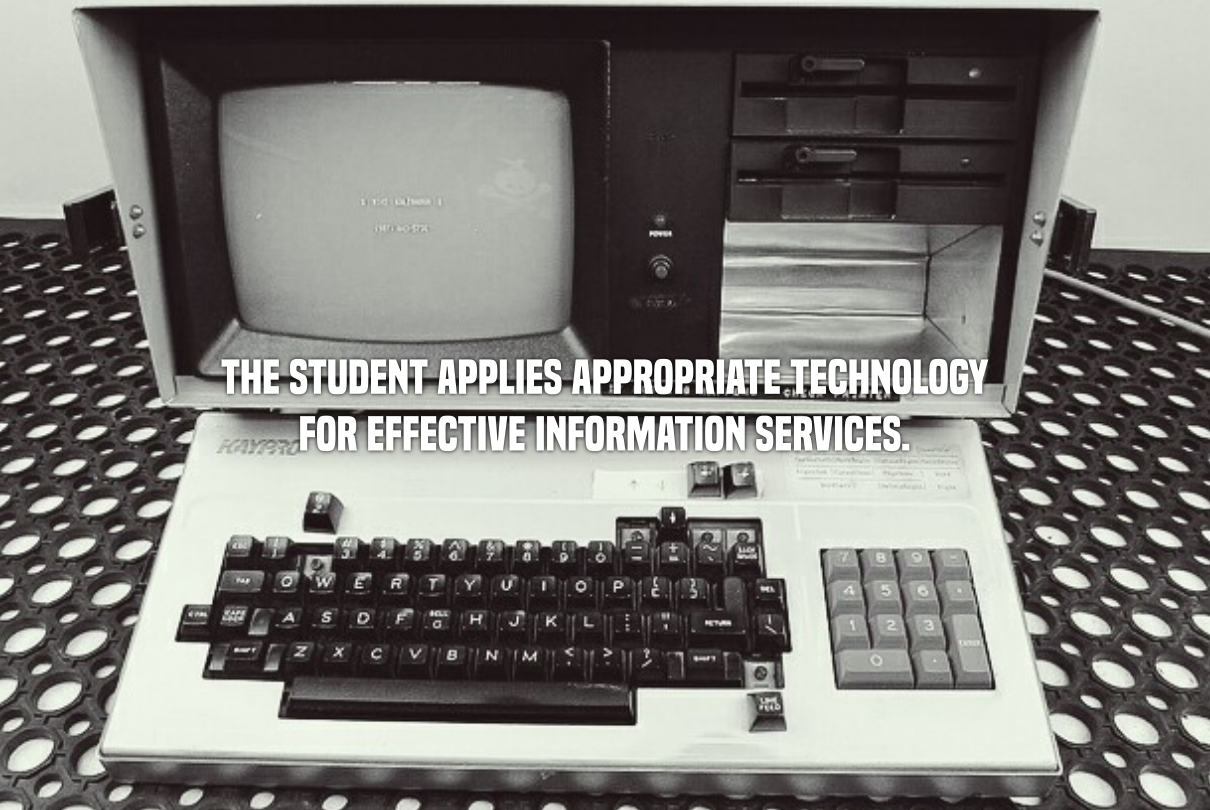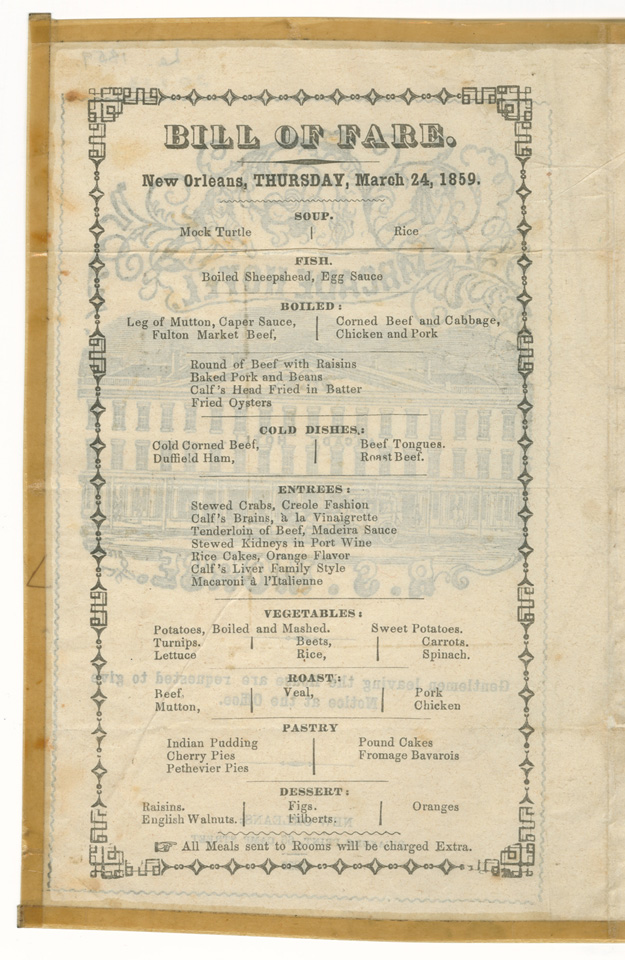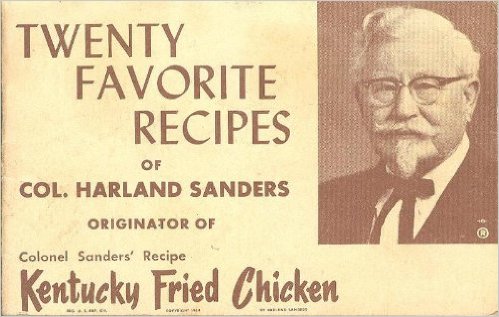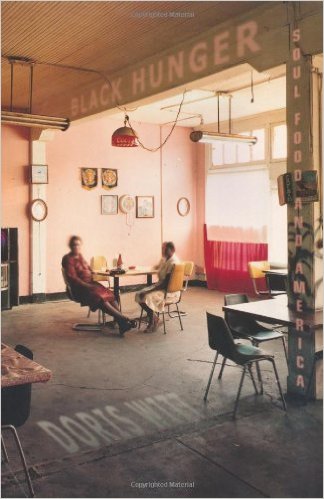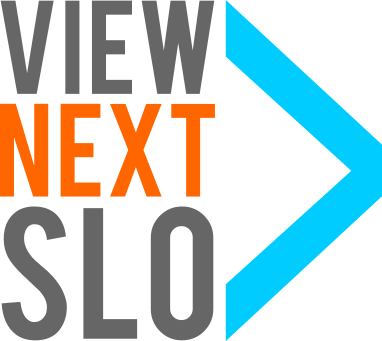Table of Contents
Student Learning Outcome Six
Reflection
The sixth Learning Outcome is one which is likely comfortable for most digital natives in the field of library and information sciences. This new generation of librarians, those who were born digital, already reach out to technology on a daily basis to solve their own problems, connect with their own communities, and better their own lives.
By stepping into library and information studies, these digital natives can then hopefully employ only the best tools for effective information services.
This Learning Outcome is one that I found especially important for my progress through the MLIS. As a digital native and as a library student, I see the marriage between contemporary technology and information services not just as a good one, but as a mandatory one. Libraries who employ social media, better search engine optimization 1), and a host of tools that make browsing and borrowing easier for their users are libraries which flourish.
While I've had the opportunity to work with dozens of different technologies during this program (from the familiar and comfortable Google Forms to the new and exotic CONTENTdm), all have helped strengthen my perspective of how a library should employ new technology for only one reason – to better their ability to serve their patrons. A library which uses social media, high-end hardware, or an excess of maker spaces simply to stay relevant in the library world is not one that is thinking of their users. Instead, these are tools which should be applied on an as-needed basis, after careful consideration of the users' needs and desires.
In a 2014 white paper from the National Impact of Library Public Programming Assessment (NILPPA) 2), the following was expressed about “The Intuitive Library” and on librarians work to educate their communities on changing technologies:
It was further suggested that libraries might promote themselves as models for listening to the community and become places that other organizations seek out for information about changes. By assuming a more public role as the barometer of significant community needs, libraries could become even more essential to others who interface with the public interests, including museums, cultural institutions, city and regional governments, etc.
The two projects below have very different visual outcomes, but both are tools which were designed to help the user access information. The first, a LibGuide, is one that many university students are fairly familiar with, but which can occasionally seem outdated or over-running with information. The second, a CONTENTdm collection of digital items, is one which allows users from across the globe to interact with artifacts from any collection that interests them.
Both are tools which are meant to better the user, not the library – and as the library is often a barometer for the health of a community, the importance of these tools cannot be understated.
Exemplar
LibGuide Creation
At the start of this project for LIS620, Information Services and Sources, I was under the impression that LibGuides were outdated and poor methods of conveying information. The majority of LibGuides I had interacted with were text-heavy and in serious information overload. I often found broken links, outdated publications, and information that was more confusing than helpful.
Through this project, I wanted to explore a number of things:
- First, creating a non-traditional LibGuide. Most of the ones I had interacted with were strictly academic, and their dryness may have been a result of that content.
- Second, to see what additional HTML tools could be used to keep LibGuides more vibrant. This is accomplished through widgets from Pinterest, LibraryThing, and WorldCat.
- Third, to see what difficulties lay in maintaining a current and relevant LibGuide.
While I excelled in the first and second goals, I was more flummoxed by the third. LibGuides are complex creations, and keeping one 3), is amazingly hard. All in all, it was a strong exercise in exploring a new 4) technology that I think is ultimately very useful and highly modifyable for librarians and students alike.
You can view the LibGuide I created on Cyberpunk here, or watch a brief GIF below touring the LibGuide.
View post on imgur.com
CONTENTdm
An OCLC 5) product, CONTENTdm is a digital collections management tool. It allows libraries to upload virtually any kind of digitized content and create a collection that is accessible across the web.
This assignment was an exercise in creating digital collections, handling metadata, and in digitizing text. Through this project, I was able to interact with my first collection management tool. This technology provides collection creators with the ability to easily upload materials, create metadata, and present the finished project in a nicely polished arena.
You can use the below images to explore the specific metadata listings for each one, or visit this page to view the entire collection.
